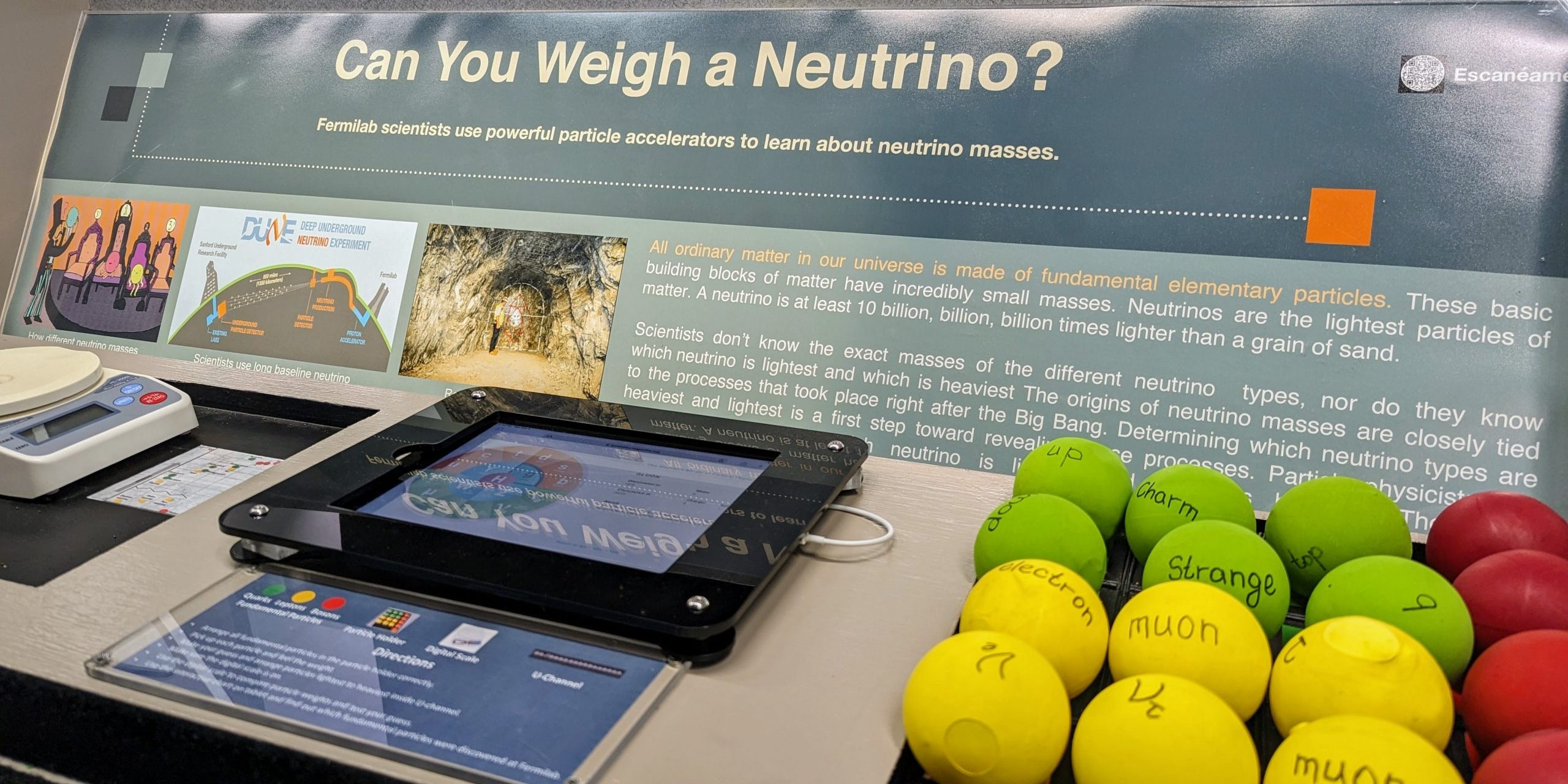This room includes the scale of the universe, fundamental particles and forces, symmetries in nature, particle astrophysics, quantum science.
Scientists work by posing important questions and developing theories to answer these questions. The challenge of particle physics is to discover what the universe is made of, how it works, and how it began. There is an amazing connection between the biggest and smallest things in the universe, and the laws of physics are valid in the whole universe throughout the whole of time. Interactive exhibits in the Ideas Room introduce our visitors to the basic concepts behind Fermilab’s science.
Spotlighted Exhibits
Subatomic particles are the smallest objects, and galaxy clusters are the largest objects currently known to scientists. At Fermilab, we explore nature at these extreme scales. Scientists think fundamental elementary particles are indivisible – not made up of anything smaller – everything is made of them.
Particle physicists discover and study fundamental particles – the basic building blocks of matter. They study properties of these particles and their interactions with one another. Physicists have discovered 17 fundamental particles and four fundamental forces. Three out of the 17 fundamental particles were discovered at Fermilab!
There is an amazing beauty in nature. A snowflake, a daisy, a butterfly: the shapes of these and other natural objects have underlying patterns and symmetries. This knowledge helps us organize our world conceptually. Symmetry is imprinted in the structure of our universe. When a symmetry of nature exists, there is a physical law attached to it. Physicists look for symmetries in laws to uncover nature’s secrets.
Astrophysicists use powerful telescopes to study galaxies. Their measurements show that besides ordinary matter, there must be some unknown dark matter and dark energy to explain how galaxies move. As the light emitted by distant stars passes by massive objects such as galaxies or black holes, the gravitational pull from these objects can bend the path of the light. This phenomenon, known as gravitational lensing, is used to find evidence for dark matter and dark energy.
Quantum physics studies the properties of subatomic particles and how they interact with one another. The word “quantum” (plural “quanta”) refers to the smallest amount of something. In the quantum world of the very small, particles that we imagine as being point-like and discrete behave like waves. Fermilab scientists explore quantum properties of particles, such as superposition and entanglement to develop leading-edge quantum technologies.







